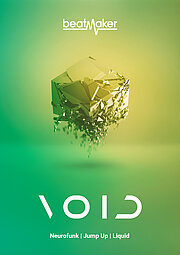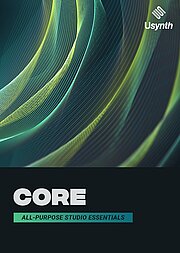The Forgotten History of Drum & Bass in Video Games
Why jungle and drum & bass became such a dominant force in the game industry, and how you can add this iconic sound to your own tracks
JULY 21ST, 2023
The origins of an iconic genre
If you listen to video game soundtracks from the 90s and early 2000s, you’ll inevitably find tons of examples of breakbeats and jungle music played behind level, title, and thematic music. You can hear everything from overt, catchy examples like the title theme from Sonic Heroes by Crush 40 to more gentle background songs like Redial from Bomberman Hero by Jun Chikuma. It’s rare to find this in more modern soundtracks, though, which begs the question: Where did this era of game music originate, and why did it disappear?
The story begins in the 1980s, when DJs began sampling a variety of old funk and soul songs for their drum breaks and building them into new arrangements — one of the most famous of these was the “Amen break,” taken from the 1969 song Amen, Brother. While the hip hop scene evolved to chop up these breakbeats in a fairly linear manner and put the focus on rapping and singing over them, the UK electronic music scene took a different approach at the beginning of the 1990s and cut up the breakbeat samples far more aggressively; this style became known as “breakbeat hardcore”. Several distinct camps of breakbeat hardcore began to form, such as darkcore and happy hardcore, and one particular style, “jungle”, saw a rapid rise in popularity with a strong showing in the UK’s Top 40.
Jungle’s rise to fame
As jungle music spread its roots throughout the club scene in the 90s, Japan began catching on — making room for some of the biggest jungle DJs to perform in their clubs, and influencing some of the most iconic Japanese composers of time like Yuzo Koshiro and Motohiro Kawashima. Thus began a fruitful era of popular music influencing video games, and some game developers began hiring popular artists. For example, Soichi Terada is well-known as the composer for the game Ape Escape, which notably had a massive jungle influence ... but he was a well-known house artist first, and his signature style is the very reason he was hired for the gig.
If you want to take a deeper dive into this early confluence of video games and jungle music, this is an excellent video that captures it perfectly:
After jungle’s popularity peaked in the mid-1990s, the less frenetic child of jungle began to emerge: drum & bass. To many people, the distinction is rooted in semantics and the two have become synonymous ... though it’s still worth noting the general distinction between jungle as the more chaotic of the two, and drum & bass as being simpler, extending its focus beyond the beat alone. To keep things simple, from here on in we’ll refer to both under the umbrella of “drum & bass”.
While drum & bass never fully disappeared, it’s become more of an accent to songs in other genres like rock, dubstep, house, and countless other examples, rather than existing on its own in video games. There are still plenty of “pure” examples of drum & bass (along with child genres like chillstep), but as it disappeared from the mainstream, it became less common in video games and moved out of the mainstream. Drum & bass was key to the development of game music, however, and if you listen closely, you can still hear its influence today.
Capturing the sound of classic drum & bass
Now that we’ve gone into the history, let’s talk about how to approach this from a production standpoint. Sampling breakbeats is still common today, although it’s not necessary in the same way it was in the 90s. You can create your very own breakbeats that sound exactly the way you want and cut them up as you please! If you want to make this process as effortless as possible, that’s exactly what Beatmaker VOID is for — constructing drum & bass rhythms on the fly, without the sample searching and excessive edits to get everything to come together cleanly. Once you get the groove just right, you can fill in the rest with far less effort and complexity.
The next step is to get a bass sound you like; not as heavy as dubstep, but something with a little grit to cut through the groove. Usynth CORE is a great tool for this, especially if you dig into the Finisher section to add some crunch and distortion with the MB Distortion option! This will allow you to shape the bass sound exactly the way you want and automate the settings however you like to develop the character over time.
If you want to get more of a classic video game feel rather than pure drum & bass, having some retro-sounding leads and chordal synths in the arrangement is essential. To get a truly authentic sound, it helps to use a variety of SoundFonts similar to those used in older game consoles — these are essentially the precursor to modern sound libraries and sound dated, but that’s exactly why they’re so effective.
If you’re not sure which ones are legal to use (since many were ripped directly from the source), when in doubt you can also go with simple chiptune-like sounds such as square waves. For this approach, the free Usynth DRIVE’s Low Blow preset is easy to shape to your liking, both for leads and chord palettes. From there, simply take inspiration from your favorite retro game soundtracks and you’re off!
Wrapping up
Video games and popular music have supported each other in a virtuous cycle, but few people know how deeply integrated drum & bass was in their co-development. If you love drum & bass, jungle, or any genres that branched out of either, you can likely trace some of your favorite songs back to the 90s gaming scene where these styles exploded.
And remember, musical styles have a way of coming back; just look at pop punk music. So if you love this type of music and want it to see another renaissance, you can be one of the artists who helps make it happen!
About the Author
Harry Lodes is a copywriter, marketing consultant and content writer for audio and ecommerce brands. He lives in the Philadelphia area, releasing Eastern/Western hybrid EDM under the artist name KAIRI hearkening back to his roots in Berklee College of Music.
Stay Up To Date
Sign up and we’ll send you an e-mail with product news and helpful stuff every now and then.
Defy Limits
We develop software solutions that enable people to create, consume and interact with music.





